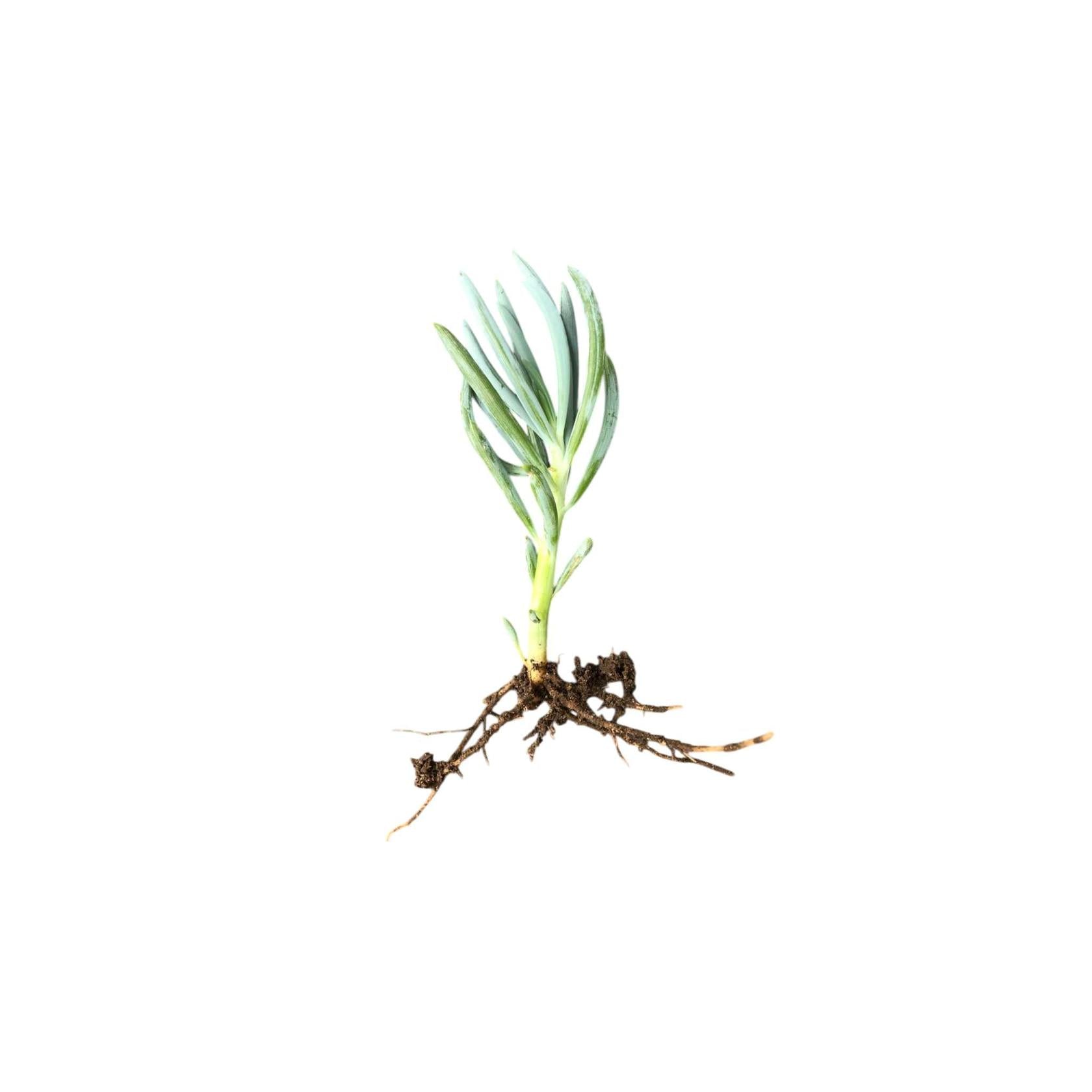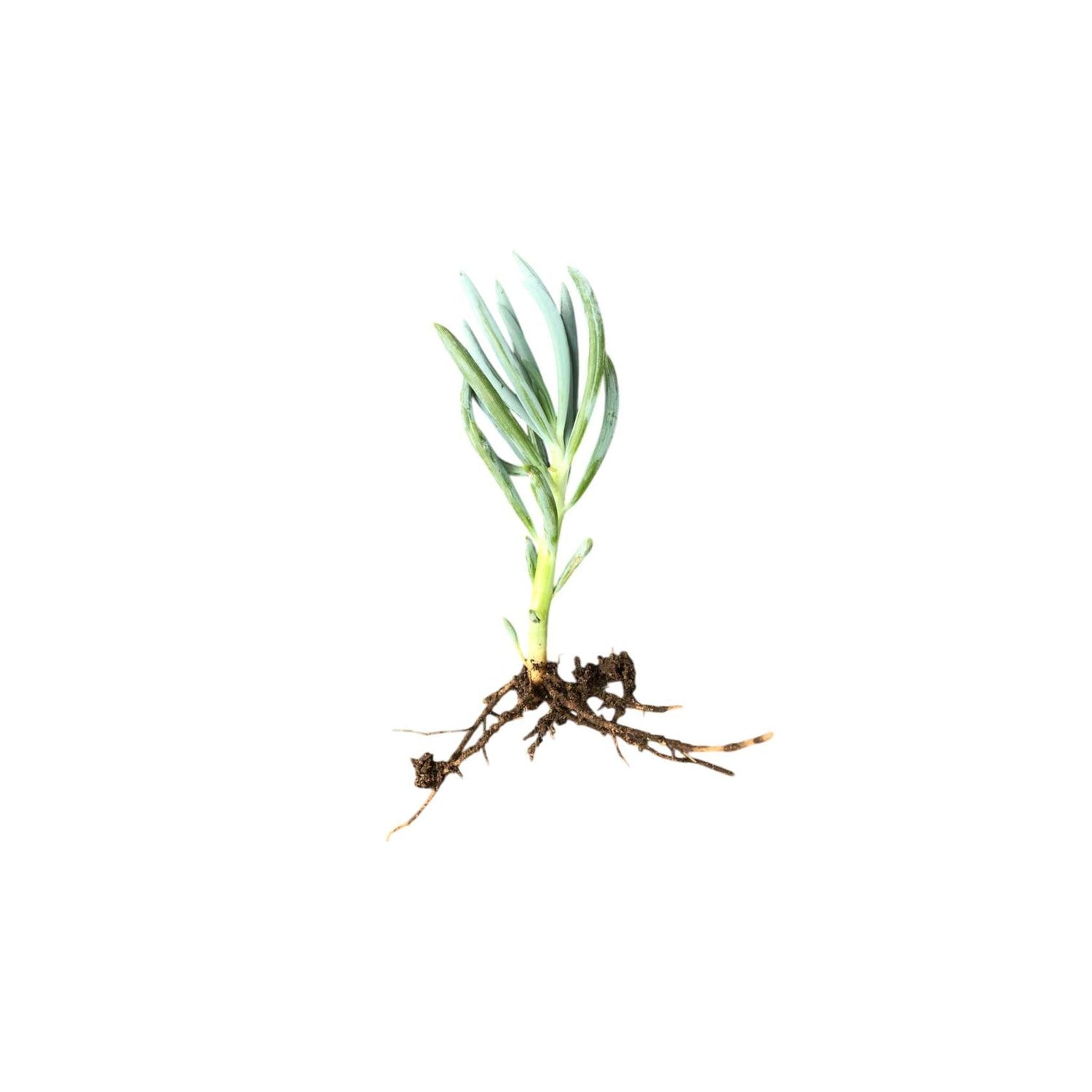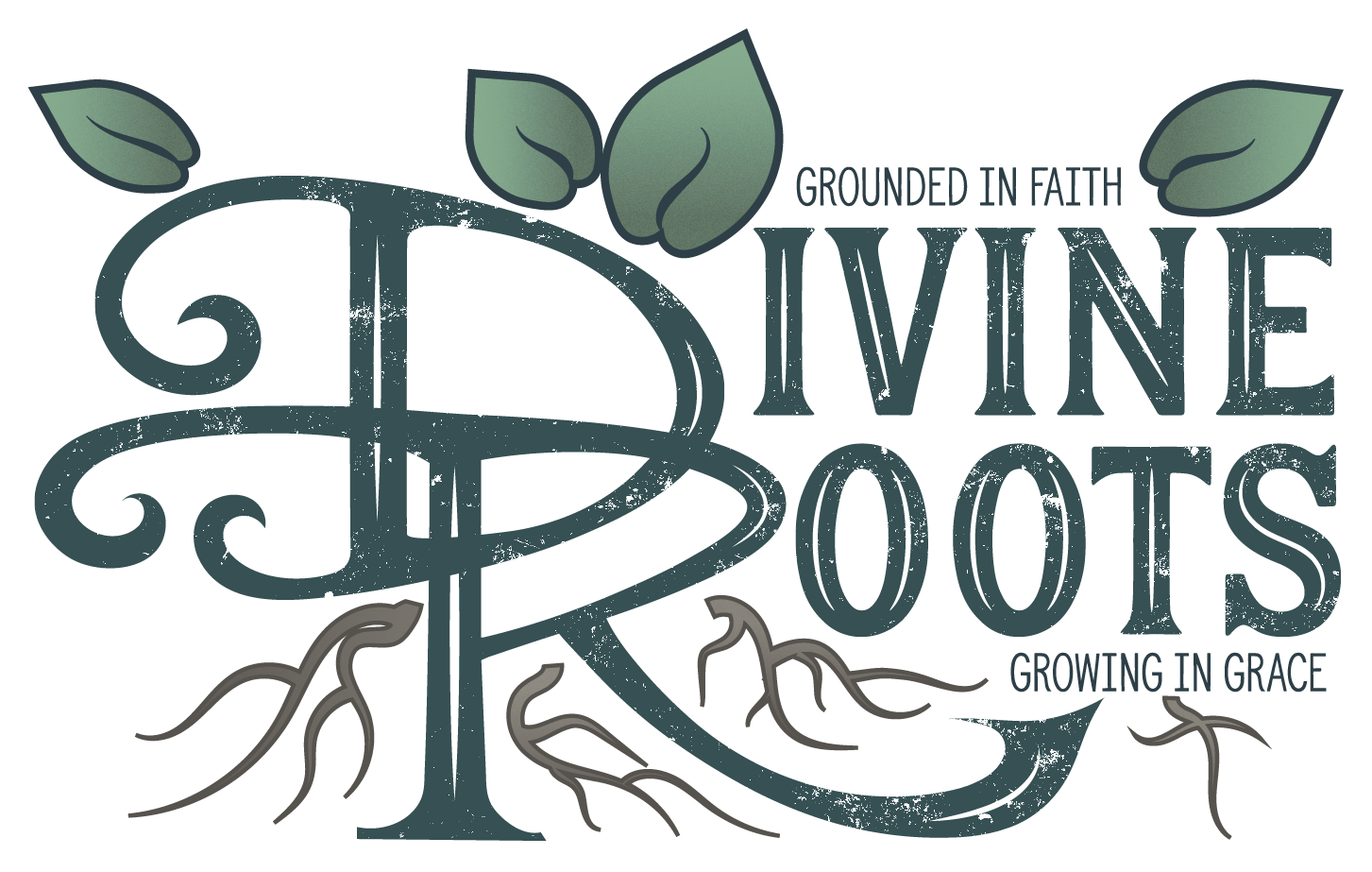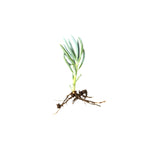
Senecio Mandraliscae Blue Rooted Starter Plant
Estimated delivery between 12 October and 14 October.
At Divine Root, we are committed to delivering healthy, high-quality indoor plants to our customers. While we do not accept returns due to the perishable nature of live plants, we offer a 30-day plant health guarantee and store credit for qualifying issues. Please read our Refund Policy carefully to understand how we handle concerns regarding plant health, shipping, and order

Blue Chalksticks Care Guide & Presentation
Pet Safe
No
Water Needs
Low
Sunlight
Full sun
Hardiness Zones
9-11
Temperature
60°F to 80°F
Suitable Space
Rock gardens, containers, hanging baskets.
Humidity
Low
Plant Class
Senecio
Plant Type
Perennial
Plant Characteristics
Blue Finger-like Growth
Genus
Senecio
Fertilizing
Monthly
Re-potting
2-3 Years
Cleaning
As needed
Propagation
Stem cuttings
Senecio Mandraliscae Blue Rooted Starter Plant: Overview
The Senecio Mandraliscae Blue Rooted Starter Plant is a young, pre-rooted specimen of Senecio mandraliscae, a striking succulent in the Asteraceae family. Native to South Africa, this plant is famed for its slender, finger-like blue-gray leaves that resemble chalk sticks. The rooted starter is acclimated for easy transplanting, ensuring rapid establishment. Mature plants form sprawling clumps (12-18 inches tall) with a ground-hugging habit, making them ideal for drought-tolerant landscapes, rock gardens, or modern container arrangements.
Senecio Mandraliscae Blue Rooted Starter: Benefits
- Drought-tolerant: Thrives in arid conditions with minimal watering.
- Architectural foliage: Adds bold texture and icy-blue color to gardens.
- Ground cover: Spreads quickly to suppress weeds and stabilize soil.
- Low maintenance: No pruning or fertilizing required once established.
- Deer-resistant: Rarely browsed by deer or pests.
Senecio Mandraliscae Blue Rooted Starter Care Guide
Light and Water
- Light: Full sun (6+ hours daily) enhances leaf color and compact growth. Tolerates partial shade but may become leggy.
- Water: Water sparingly-only when the soil is bone-dry. Overwatering causes root rot.
Soil and Fertilizing
- Soil: Requires well-draining, gritty soil (e.g., cactus/succulent mix). Avoid clay or moisture-retentive soils.
- Fertilizer: None needed; thrives in nutrient-poor conditions.
Temperature and Humidity
- Temperature: Hardy in USDA zones 9-11. Tolerates light frost but struggles below 25°F (-4°C).
- Humidity: Prefers dry climates; high humidity may increase rot risk.
Pruning, Propagating, and Repotting
- Pruning: Trim leggy stems to encourage bushiness. Remove dead leaves for tidiness.
- Propagating: Easily propagated from stem cuttings, allowing cut ends to callus before planting.
- Repotting: Repot every 2-3 years if root-bound. Use a shallow, wide container for spreading growth.
Common Problems
- Root rot: Caused by overwatering. Ensure pots or beds have excellent drainage.
- Mealybugs: Treat with neem oil or insecticidal soap.
- Leggy growth: Due to insufficient light. Move to a sunnier location.
- Leaf drop: Often a sign of temperature stress or overwatering.
Senecio Mandraliscae Blue Rooted Starter: Best Locations & Uses
- Rock gardens: Contrast beautifully with green succulents and stones.
- Slopes and banks: Prevents erosion with its mat-forming roots.
- Modern containers: Add sculptural interest to patios or rooftops.
- Coastal gardens: Tolerates sandy, salty soils.
- Xeriscapes: Ideal for water-wise landscapes.
Note:
Toxic if ingested. Keep away from pets and children.


